Honor Router 3
Before we get to this router, we need to mention that recently the Honor brand, previously Huawei’s budget brand, is no longer part of that Chinese-owned company.
The segmentation of this company was intended to provide a means to handle issues that Huawei was having with American sanctions, and it also allows Honor to get the Android Google Play store back on its phones, among other services that Huawei branded devices had been denied.
The product we’re reviewing today was designed when Huawei and Honor were one business, and it continues to be sold under both brand names now that they’ve separated.
Our review hardware is the Honor Router 3, even if it can be found with Huawei branding and a different name in some regions.
Do you love fast wireless routers but hate what they often cost? Then you might have come to the right place as we investigate the implausibly cheap Honor Router 3.
Availability and pricing
Buckle up! Because the price of this device might result in unexpected whiplash.
The retail cost directly from Honor in the UK is £79.99. But, it can be found cheaper than that low number elsewhere.
Amazon sells it for £54.99, and via Bangood UK, for those prepared to wait 15-20 days for shipping from China can have the Honor Router 3 for just £23.15. Although we suspect that model might come with Chinese firmware installed that can't easily be changed, so be warned.
In the USA, Honor branding is replaced with Huawei, and the equivalent model is the AX3 that costs $79.99.
Considering the technology in this device, wherever you source it, this router is insanely cheap for what it can do.
- Also take a look at the best small business routers
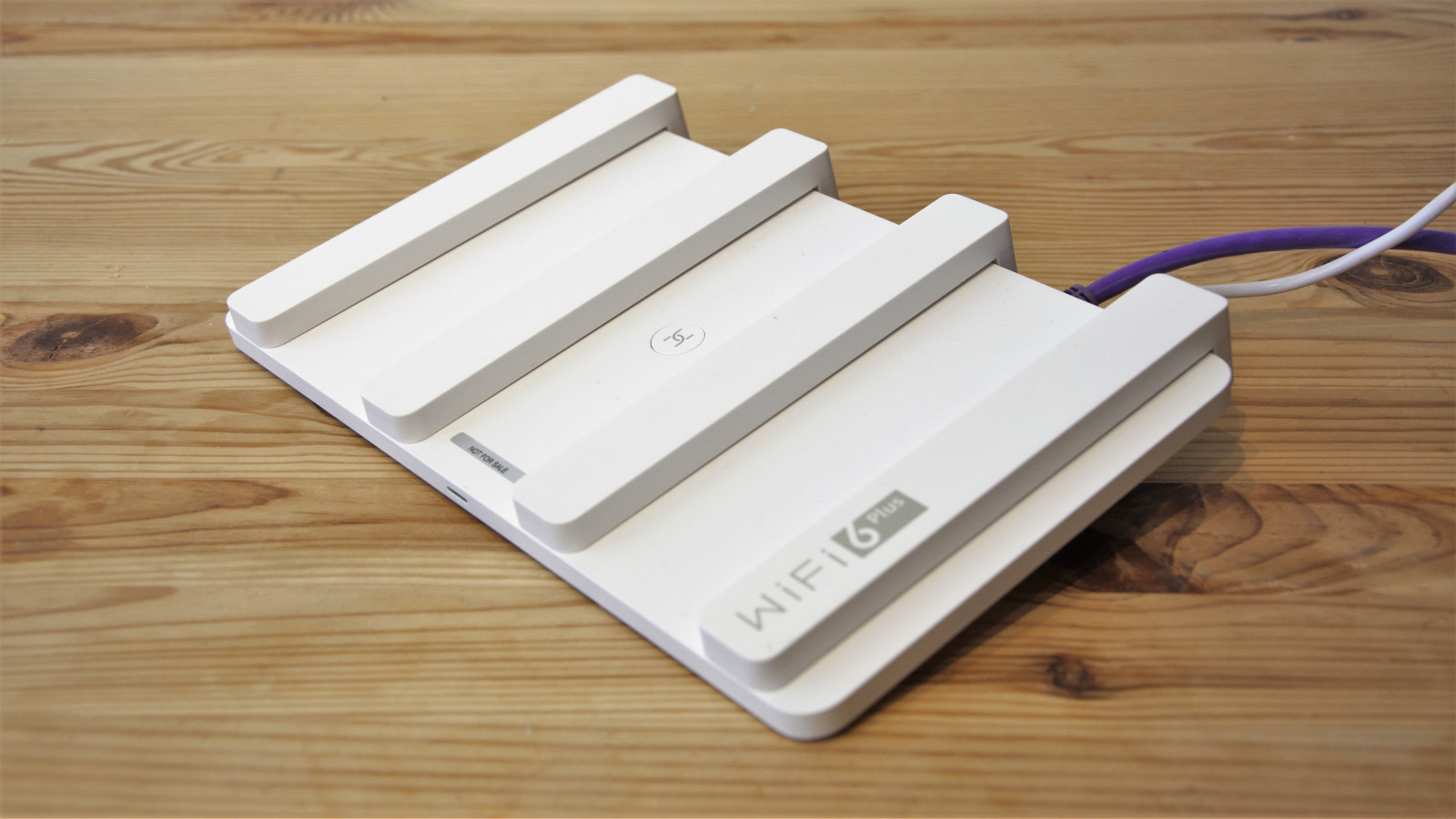
Design
Frankly, we’re a bit tired of routers like look like they’re a medieval helmet or Darth Vader’s fondue set, so the Router 3 has a refreshingly controlled appearance to us.
Out of the box, the four antennae are folded flat against the main body, but this snap into position and with the plug-style PSU connected, it is ready to use in seconds.
The external construction is entirely plastic, but Huawei used the highest quality tooling to give the snow-white appearance some interesting textures and surface variations.

With a remarkably low weight of only 385g, we’d assume the plastic isn’t very thick and that this isn’t the most robust router we’ve seen. Our only real disappointment is that given how lightweight it is, that the designers didn’t consider putting any slots underneath to enable it to be wall-mounted.
That decision probably has more to do with the orientation of the antenna, as they only have a single position that places them perpendicular to whatever Router 3 is sitting on.
A small device by router standards, it is just 24.2 cm long by 15.2 cm deep, and excluding the antenna 4.1 cm thick.
In keeping with the functional styling, the external features have also reduced to the minimum required by most users.
The top surface has a single WPS button in the middle, and the front a single LED indicator, where the sides have nothing but ventilation slots.
On the rear face are four 1GbE Ethernet sockets, one being pre-allocated to WAN use, leaving three for wired networking distribution, a reset hole, and the PSU inlet.
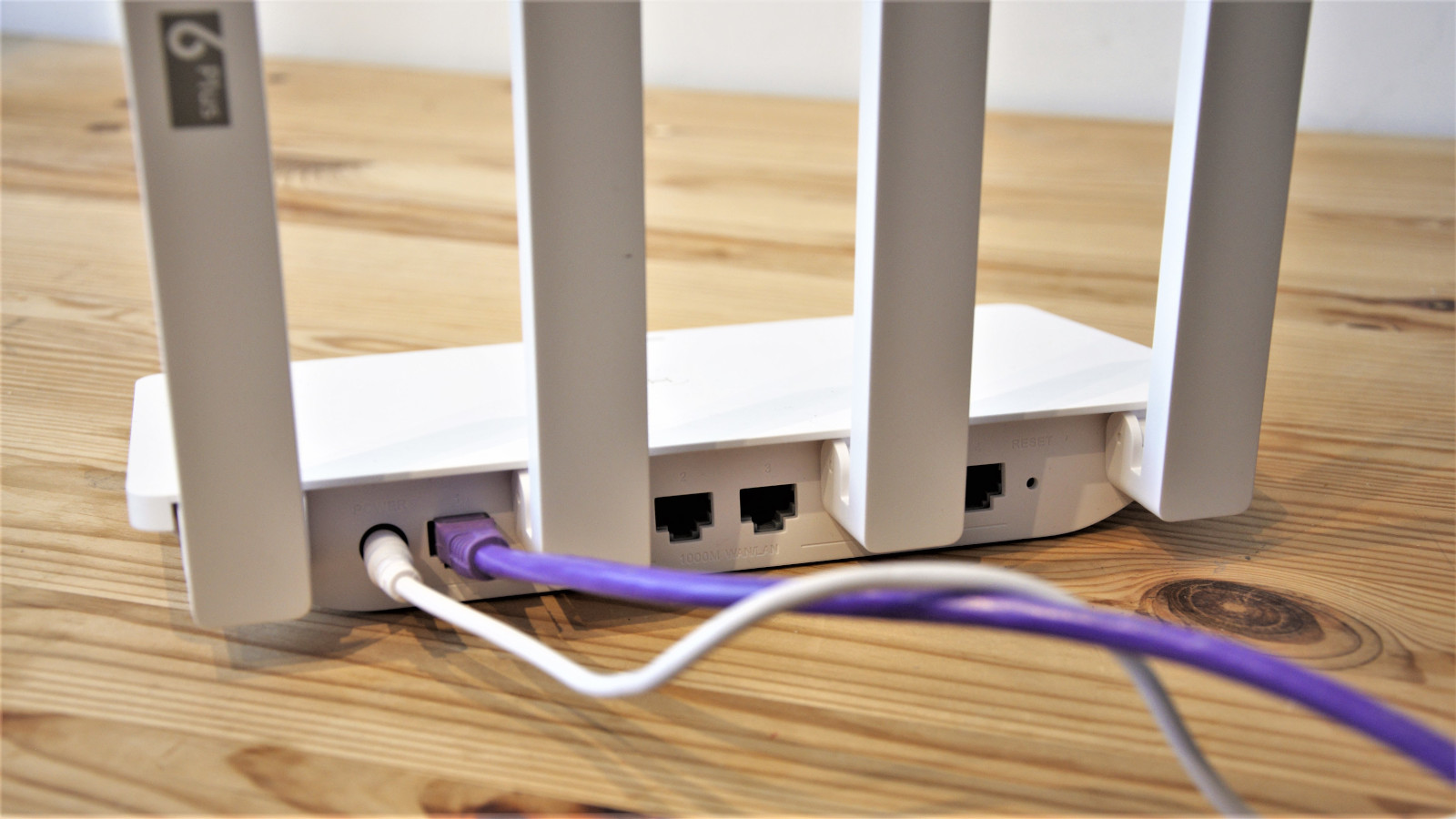
There isn't any funky lighting, USB ports, or any of the more curious features that other Router makers have added to their hardware to make it marginally more interesting.
The lack of a modem isn’t an insurmountable issue, since VDSL modems are also relatively cheap, and cable internet usually comes with a carrier-specific device.
And, it is easy to disable WiFi on an existing router and then enable it on this kit using the same SSID name and create a seamless transition, and that’s what we’d do.
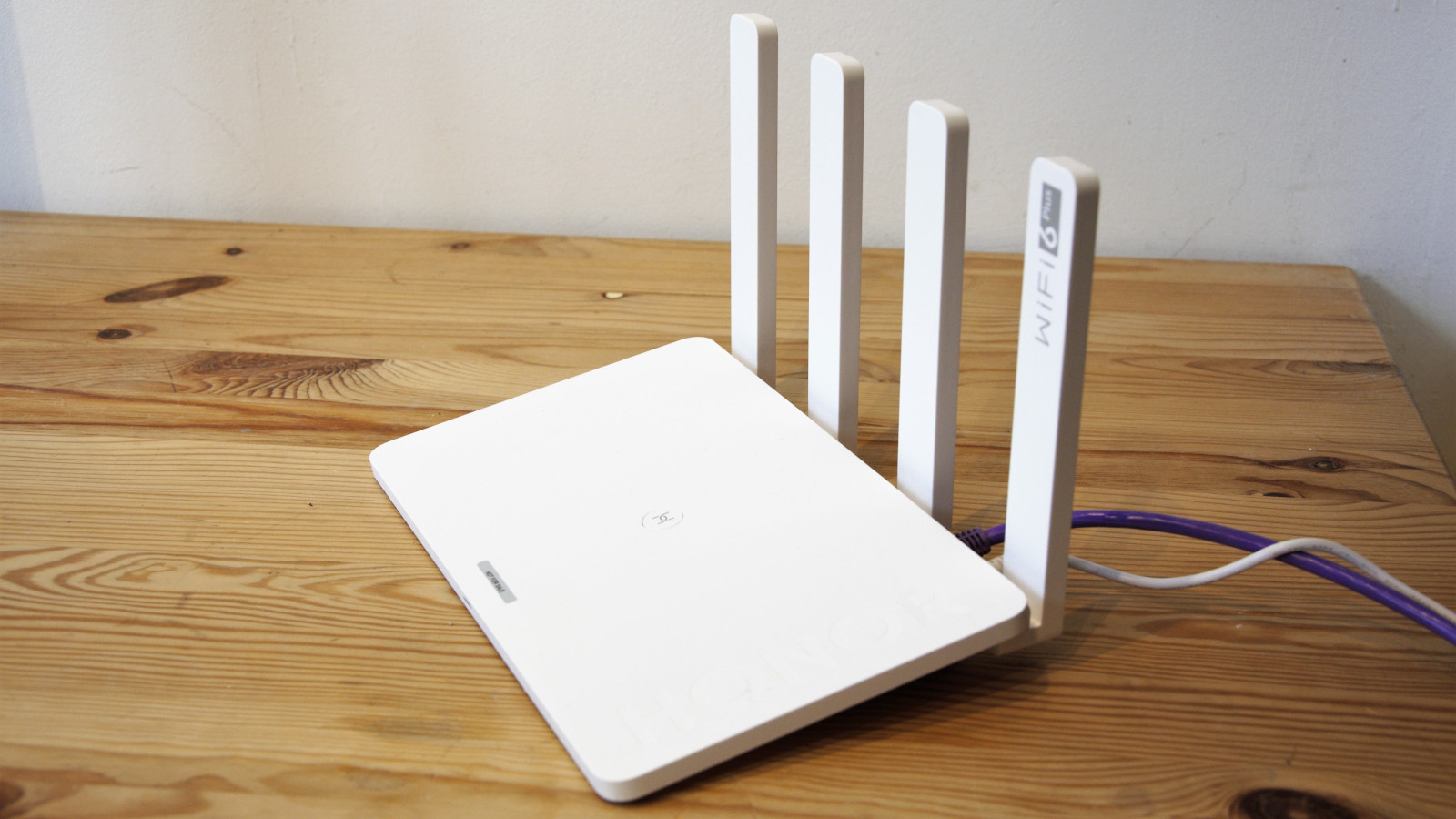
In use
Often with routers, configuring them involves finding the IP address and then accessing the web-based interface via a browser, and you can do that.
But Honor has a nifty phone application that does all the finding for you, and we never bothered with the browser approach because of how easy it was to set everything up using this.
In its specifications, Honor describes this router as being a WiFi 6 Plus (802.11ax) rated for AX3000 or 3000Mbps. And it can deliver on that promise if the clients connecting support 802.11ax wireless standards.
Those clients can utilise 2.4GHz (574Mbps) and 5GHz (2402Mbps) to deliver that throughput, but earlier 802.11ac (now called WiFi 5) can use the 160MHz range for short-range downloads.
When first configured, it can be set either to call each of the frequencies a different SSID or to have only one SSID that the router automatically allocates to each client according to the quality of the connection.
That’s a remarkably useful feature as, for the foreseeable future, people will be using older wireless networking devices and mixing them with newer technology.
What users will experience is that close to the router, they’ll be connected over the 5GHz range. As they move further away and the performance drops, they’ll be automatically switched to 2.4GHz to maintain the connection.
In practical terms, given the routers number of antenna and receivers, this design should be able to handle four users on 2.4GHz and sixteen on 5GHz without them restricting each other. And, it can cope with more simultaneous connections if they’re not all trying to stream 4K videos or download large files.
It is worth pointing out that while the Router 3 can deliver up to 3000Mbps to wirelessly connected clients, the wired networking ports on the device are 1GbE, so all three available ports would need to be in use and providing data sources that could maintain those speeds for that to more than a purely theoretical number.
If this device was purely for distribution, that might seem implausible since the router doesn’t support link aggregation, and most users don’t have 3000Mbps links to the Internet. But the bandwidth is useable for traffic between wirelessly connected devices in addition to wired network sources.
These points aren’t a unique issue for Honor, as most high-speed routers have great difficultly achieving their headline performance for numerous practical reasons.
Our experience of this device revealed that it is a true WiFi 6 router and is capable of excellent performance with the right client technology.
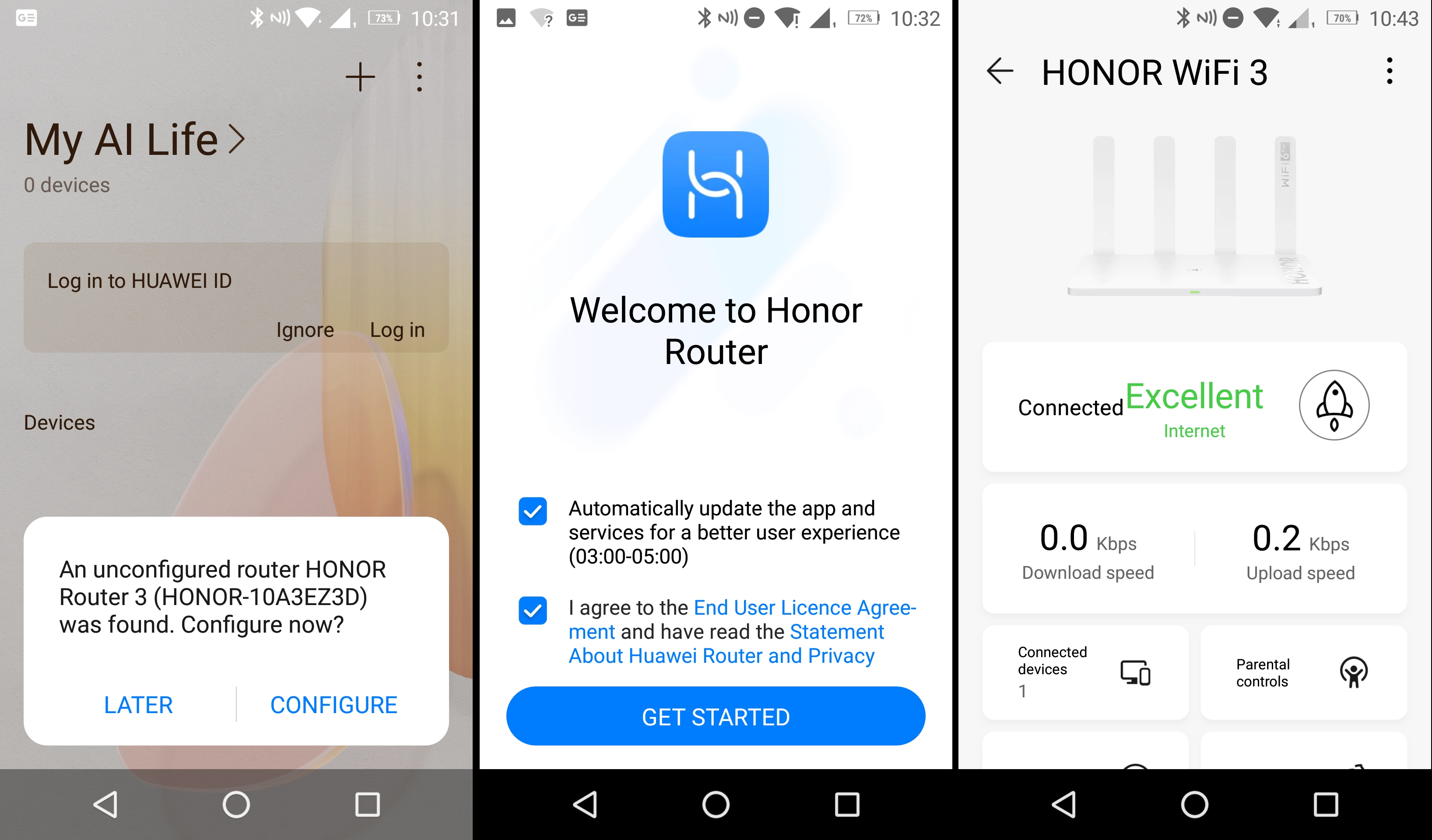
Some branded products with larger antennas and more processing power might be fractionally faster or cope with ancient 802.11b clients a little better. But, the Honor Router 3 is a very serviceable solution for distributing local services and Internet connections.
Most users upgrading from earlier technology will first notice how they can go to remote parts of their property where previously the WiFi service would disconnect and find it maintains the connection.
For those with a large property covered by more than one router, these can be configured to create a mesh compliant network seamlessly handing over between them as devices move around.
We tested 2.4GHz and 5GHz independently, and we noticed a significant improvement in the range of the 5GHz signals over our usual BT Smart Hub, which is an 802.11ac class router.
Our router location is at the front of the property on the ground floor, and typically devices upstairs and at the rear would revert to 2.4GHz as 5GHz wasn’t reliable there. Connected phones and computers maintained a 5GHz connection in these locations, and it only reverted to 2.4GHz when we extended into the rear garden.
At a shorter range, the 5GHz frequency maintained over 850Mbps within a metre of the router, and that only dropped to 500Mbps when on the other side of a wall.
For whatever reason, possibly the number of local devices using 2.4GHz, that frequency produced slightly spurious results where the speed initially went up as we moved away from the router. However, that we could still get more than 14Mbps on the other side of two walls more than 8 metres away in the garden was impressive.
Given the variable nature of wireless networking, we can't guarantee these speeds in your home or office, obviously.
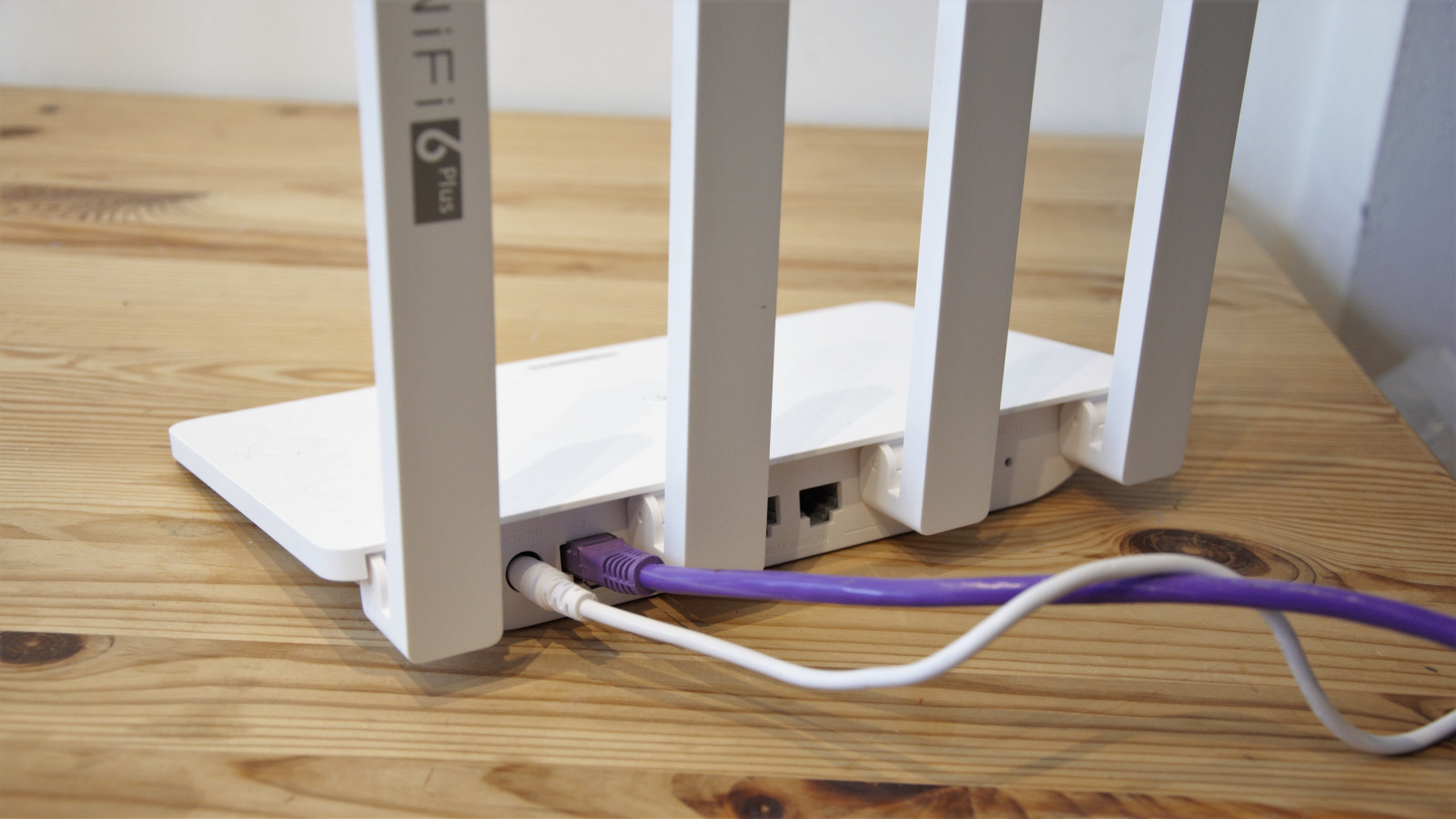
Firmware
The hardware might seem minimalist from the outside, but the firmware is full of useful features that users might available themselves.
These include time-limited guest accounts, a DMZ, port forwarding and triggering, VPN client (both L2TP and PPTP supported), parental controls, a firewall, bandwidth capping, UPnP, IPv6 and a special IPTV setting for finicky TV streaming boxes.
There are only two significant features missing; network-attached storage using USB connected device, and it doesn’t offer a wireless bridge mode.
In our experience, even expensive routers tend to be inadequate NAS solutions, and bridging is a specialist requirement better solved with wires, so neither of these omissions are deal-breakers.
Overall, the Honor Router 3 would be a decent performer for something that costs substantially more and an excellent upgrade for those still using 802.11ac router technology.
It’s probably not for business users who want more security bells-and-whistles and more control over mesh technology, but it is almost perfect for home users.
Final verdict
There are better made, marginally faster WiFi 6 and slicker implementations available from other brands, but not at this price or even close.
A classic example is the ASUS RT-AX82U, a dual-band AX5400 class router with sci-fi styling and mesh support. This is an excellent router, but it costs double the price of the Honor Router 3.
Many online resellers push lower specification routers that cost multiples of the Router 3 price and don’t even support 802.11ax modes or mesh networks.
While we can think of a few good reasons why a business might shy away from using this device, for home users that want faster and more reliable WiFi in their homes, the Honor Router 3 is an obvious choice.
It delivers many of the critical advantages of WiFi 6 for a bargain-basement price, and it’s a breeze to get working.
Most homes don’t have a dozen people all streaming 4K TV, and therefore a dual-band setup is enough bandwidth for typical usage with the frequency sharing technology that WiFi 6 enables.
Its only significant downside is that word-of-mouth is driving stock levels down as customers realise the bargain that this hardware represents.
- We've also highlighted the best mobile hotspot
0 comments:
Post a Comment